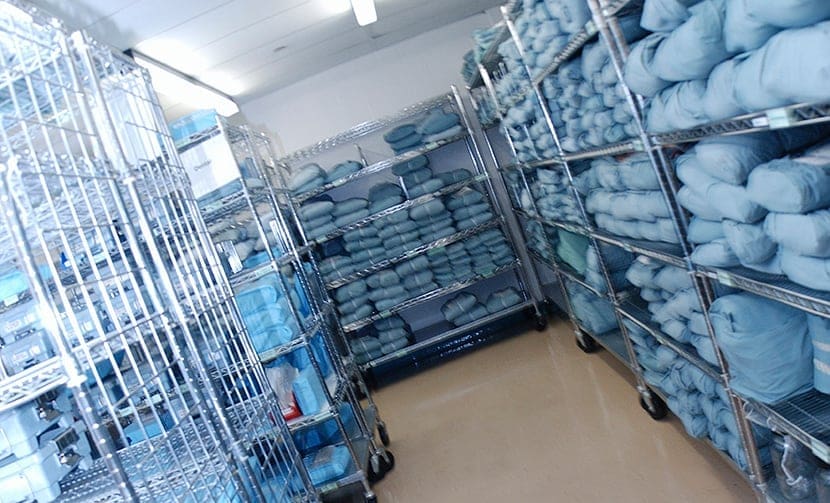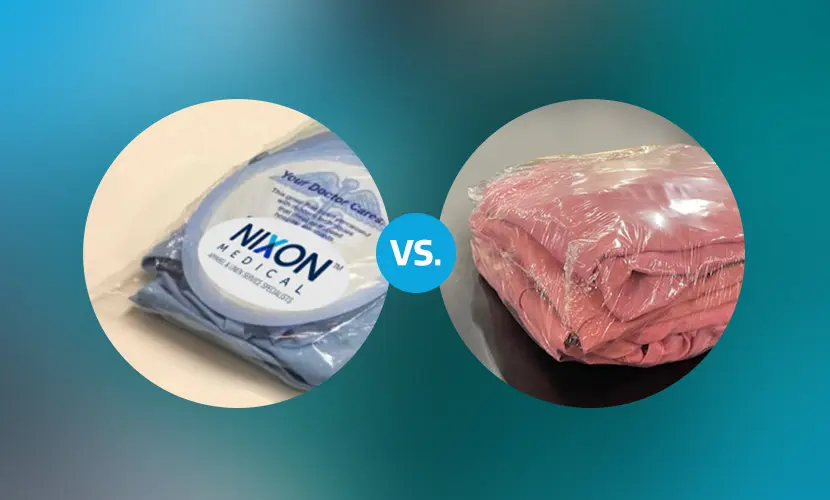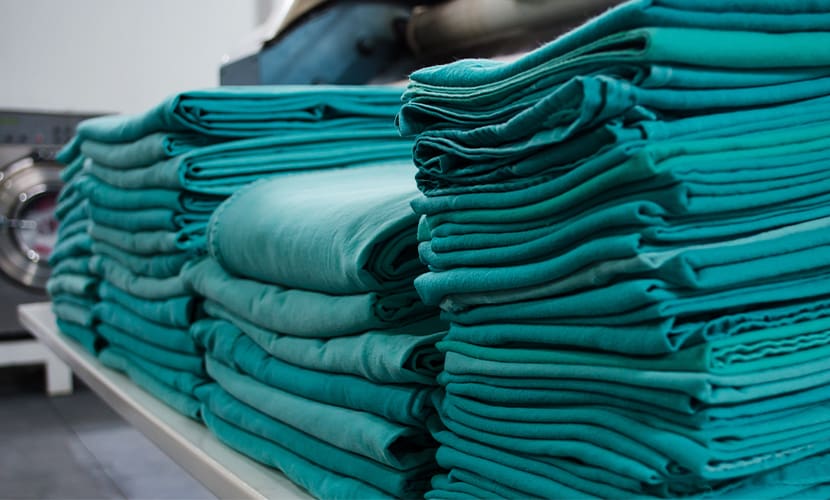Ways to Control Infectious Outbreaks in Your Outpatient Facility
December 17, 2019 by Nixon Medical
Proper healthcare textile management is essential to ensuring the health and safety of patients and clinicians alike. Every patient, medical professional, staff member, and launderer that interacts with medical laundry, like patient gowns and robes or clinician scrubs and linens, plays a part in preventing the spread of disease and infection.
An unfortunate case in Louisiana saw a deadly fungal infection spread throughout a children’s hospital because of poor laundry practices. Grim situations like this are entirely avoidable with professional medical laundry services and proper handling. In this blog, learn how to control and prevent infection in your outpatient facility with proper medical laundry processes and services.
Utilize Safe and Compliant Medical Laundry
Professional medical laundry services are designed to promote the highest levels of sanitary handling, distribution, and inventory management throughout every phase of the process. Our state-of-the-art laundering facilities, for example, are among the most advanced in the nation and offer important insight into how medical laundry management should be executed.
Cross-contamination is one of the biggest concerns you’ll face with medical textiles and laundry. At the service level, we eliminate the chance for cross-contamination by physically separating soiled and clean products, both within our facilities and our service vehicles.
Filtration systems provide negative airflow to ensure that any potentially contaminated garments or linens are effectively quarantined. The entire process meets or exceeds all healthcare standards, as well as stringent guidelines set by the CDC, OSHA, and the Healthcare Laundry Accreditation Council.
Practice Sanitary Linen and Laundry Storage Processes
The best way to ensure that soiled medical linens don’t spread dangerous (and costly) diseases is to practice safe cleaning, storage, and transportation processes. Throughout the entire transportation and storage process, clean linens should always be covered and sealed in plastic to prevent contamination. All on-site linen must be sorted correctly to avoid confusion and mix-ups between clean and contaminated items.
Your practice should have a designated area to store clean linens where they won’t be touched until they’re needed. Your linen storage shelves should be clear of dirt and debris, and stored linens must not touch the floor, walls, or ceiling so that they receive appropriate airflow and ventilation.
Keep your linen storage room securely closed when not in use and restrict access to it by anyone other than authorized personnel. The last thing you need is a patient searching around for a new blanket or towel and contaminating the entire supply!
Use a Clear and Logical Laundry Inventory System
If your medical facility doesn’t have a rigorous laundry inventory system in place yet, it’s time to act. A proper inventory system is vital to practicing effective infection control. It allows you to track what laundry is clean, what is contaminated, what is in stock, and what needs to be reordered. Precise inventory management means you won’t have to worry about lost or stolen garments or linens, and your staff and patients will always have clean, sanitary supplies to handle any situation.
From washcloths to pillowcases, we track every piece of laundry going into or coming out of your facility. Tracking ensures accurate inventory that won’t leave you guessing about how much laundry you have and when to expect a pickup or delivery.
Have a Trusted Partner Available for Fast Emergency Response
Busy outpatient facilities can’t afford to run out of clean, sanitary linens, laundry, and garments. As part of your professional medical laundry management service, your provider should assign a dedicated representative who’ll be familiar with your facility and your unique needs. This person should act as your main point of contact and customize your service as your needs change or emergencies arise.
At Nixon Medical, for example, we refer to this person as your Route Service Representative. They’re a crucial part of what makes a third-party medical laundry service valuable to the health and safety of your patients and staff, as well as to your practice managers who can always benefit from reliable support. If you need an emergency resupply or pickup, our designated Route Service Representative provides next-day special deliveries at no extra cost.
Improve Infection Control in Your Outpatient Facility Today
If your current healthcare textile management company doesn’t meet or exceed the guidelines discussed here, there’s room for improvement in your disease and infection control standards.
Here are a few essential medical laundry tips to help you determine whether your current medical apparel and linen service provider is appropriately addressing infection control and prevention:
- All linens should be delivered in sealed bags
- All linens should be stored with protective coverings
- Only use designated laundry carts to transport, collect, and distribute garments and linens
- New linens should be received in an isolated area, separate from any waste materials
- Soiled and clean linens should never be mixed
- Treat all used linens as though they’re contaminated
- Handle contaminated laundry as little as possible with minimal agitation
- Segregate soiled loads into hampers and fluid-proof bags
- Never use patient-designated linens for any other purpose, such as general cleaning
Contact us to streamline, organize, and enhance the safety of your laundry management process to maximize infection control and prevention in your facility.



